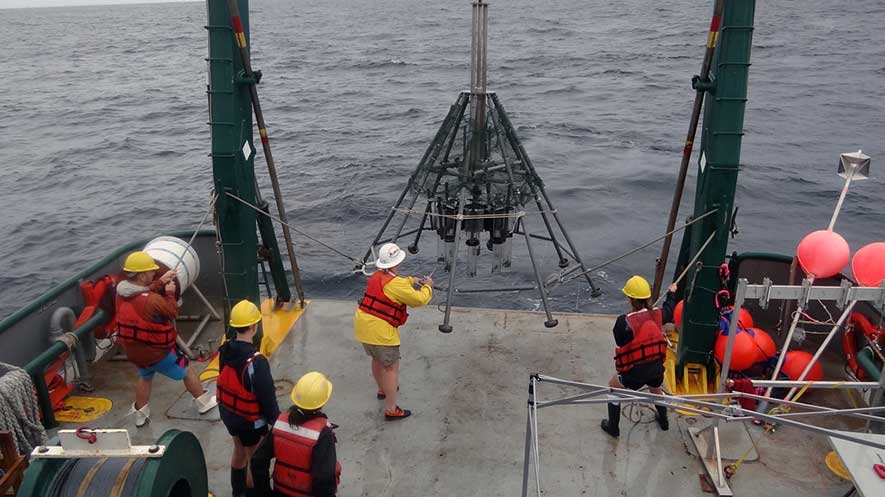Surface sediments and fish bile analyses suggested that the blowout transported and deposited an increased concentration of Hercules-derived hydrocarbons to the environment. They found that high molecular weight (HMW) polycyclic aromatic hydrocarbon (PAH) concentrations in sediment samples decreased as distance from the rig increased, while HMW PAH metabolites in red snapper bile nearly doubled compared to the previous year. The team published their findings in the Journal of Geophysical Research: Oceans: Tracking the Hercules 265 marine gas well blowout in the Gulf of Mexico.
The Hercules 265 blowout was smaller than Deepwater Horizon but still caused concern regarding environmental hydrocarbons. Few published studies have documented oil and gas production’s impacts on sediments or fishes in the near-field surrounding active platforms. A large collaborative team of oil spill scientists from multiple institutions tracked the plume and surface water circulation for 20 days using surface drifters to predict potential impact areas and began collecting samples 36 days post-blowout. They compared their data with regional data collected prior to and after the Hercules 265 blowout and collected elsewhere in the northern Gulf of Mexico in 2013.
Sediment and fish samples taken southeast of the Hercules 265 site exhibited elevated levels of HMW PAHs. The atmospheric plume traveled predominantly east, while surface ocean water above the site traveled southeast. The researchers hypothesize that HMW PAHs reached the surface waters at the Hercules 265 site, where a mesoscale anticyclonic eddy transported them southeast and deposited them to the seafloor. They emphasized the need for continued routine sampling of waters, sediments, invertebrates, and fish for oil contamination to establish baseline levels of contaminants and to better understand the cumulative effects of chronic oil releases and events such as Deepwater Horizon and Hercules 265.
Lead author Isabel Romero stated, “Due to the short duration of the Hercules event, the levels of contaminants were found to be below established concern concentrations for the environment.” She noted that this research highlights the need for an established scientific network to execute rapid sampling responses and interdisciplinary sampling techniques to track and detect the fate and signature of accidental blowouts.
The study’s authors are Isabel C. Romero, Tamay Ozgokmen, Susan Snyder, Patrick Schwing, Bryan J. O’Malley, Francisco J. Beron-Vera, Maria J. Olascoaga, Ping Zhu, Edward Ryan, Shuyi S. Chen, Dana L. Wetzel, David Hollander, and Steven A. Murawski.
Data summarized in this paper from C-IMAGE and CARTHE consortia are available online both here and here.

